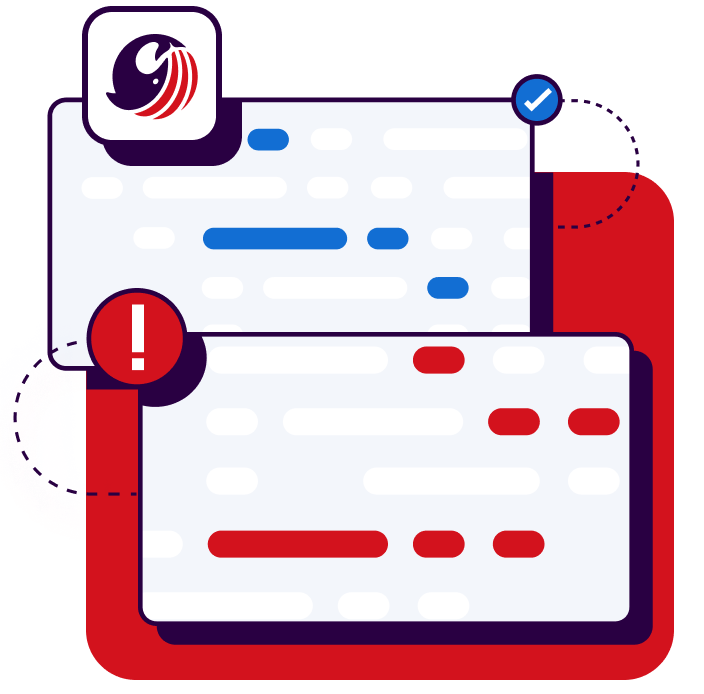Streamline compliance
SonarQube automates the path to provable code compliance.
Learn moreWhat is autoscaling?
Autoscaling is a critical feature in large-scale server and cloud computing that dynamically adjusts the number of computing resources allocated to an application based on its current demand. This technology ensures that applications can maintain optimal performance levels by automatically adding resources (scaling up) during periods of high demand and reducing (scaling down) during low demand, thereby optimizing costs and resource usage. Autoscaling not only enhances application performance and reliability but also eliminates the overhead of performing these tasks manually, freeing IT teams to focus on more strategic tasks. Additionally it helps companies save on resource cost by only consuming resources required by applications at any given time. Autoscaling works by monitoring specific metrics such as CPU usage, memory consumption, and network traffic. When these metrics cross predefined thresholds, autoscaling triggers actions to add or remove resources as needed. This capability is integral to cloud services offered by major providers like Amazon Web Services (AWS), Google Cloud Platform (GCP), and Microsoft Azure.
What are autoscaling tools in software development?
Autoscaling tools in software development are vital for maintaining optimal performance, cost efficiency, and resource utilization in dynamic and scalable applications. These tools automatically adjust the number of active servers, containers, or application instances based on real-time demand, which is crucial for handling variable workloads and ensuring seamless user experiences. In software development, autoscaling tools help manage resource allocation efficiently, reduce manual intervention, and support continuous delivery and deployment practices.
One of the primary autoscaling tools used in software development is Kubernetes Autoscaler, which includes the Horizontal Pod Autoscaler (HPA), Vertical Pod Autoscaler (VPA), and Cluster Autoscaler. HPA scales the number of pod replicas based on metrics like CPU and memory usage, ensuring that applications can handle varying loads. VPA adjusts the resource requests and limits for containers to optimize their performance, while Cluster Autoscaler manages the number of nodes in a Kubernetes cluster, adding or removing nodes based on demand.
AWS Auto Scaling is another essential tool, providing automatic scaling for Amazon Web Services (AWS) resources such as EC2 instances, ECS tasks, DynamoDB tables, and Aurora databases. It uses predefined policies and real-time monitoring to ensure applications maintain high availability and performance while optimizing costs. Google Cloud's Autoscaler and Microsoft Azure Autoscale offer similar functionalities for their respective cloud platforms, enabling automatic scaling of virtual machines, Kubernetes clusters, and other resources based on metrics like CPU usage, memory consumption, and custom metrics.
In addition to cloud-specific autoscaling tools, open-source solutions like Prometheus combined with custom metrics can provide flexible and powerful autoscaling capabilities. These tools integrate with monitoring and logging systems to collect real-time data, enabling precise and responsive scaling actions.
Autoscaling tools are critical in software development for several reasons:
- Performance optimization: They ensure applications can handle increased loads during peak times by scaling up resources and maintain efficiency during low usage periods by scaling down.
- Cost efficiency: Autoscaling reduces costs by preventing over-provisioning of resources and only allocating what is necessary based on demand.
- High availability: By automatically adjusting resources, autoscaling tools help maintain application uptime and reliability, even during traffic spikes or failures.
- Operational efficiency: They reduce the need for manual intervention in resource management, allowing development teams to focus on writing code and delivering new features.
- Continuous deployment and delivery: Autoscaling supports modern development practices by ensuring that infrastructure can dynamically adjust to the needs of continuous integration and continuous delivery pipelines.
Overall, autoscaling tools are indispensable in the software development lifecycle. They provide the scalability and flexibility needed to build, deploy, and maintain high-performing and cost-effective applications in today’s fast-paced and resource-demanding environments.
Autoscaling SonarQube
A significant advantage of SonarQube Enterprise is its ability to handle large volumes of code and numerous concurrent analyses requested by multiple teams, making it ideal for organizations with extensive and rapidly evolving codebases and growing teams. It provides robust reporting and dashboards, offering insights into code quality trends and hotspots that need attention. These features allows enterprise scale development teams to leverage the power of SonarQube to reach a level of high quality and secure code.
When operating SonarQube Data Center Edition in a Kubernetes cluster, app nodes can be configured to autoscale based on load. SonarQube supports Kubernetes Horizontal Pod Autoscaling (HPA) of app pods when running in a Kubernetes cluster. This will ensure developers never wait for an analysis to complete due to resource limitations. Additionally, because app pods are autoscaled in and out based on demand, the resources needed to run SonarQube are optimized for cost savings.
An additional benefit of autoscaling with SonarQube Server Enterprise is that teams can configure and manage SonarQube in Kubernetes in the way they manage their other tools and applications. This helps reduce tool proliferation for operations teams managing the tooling for the development teams.
